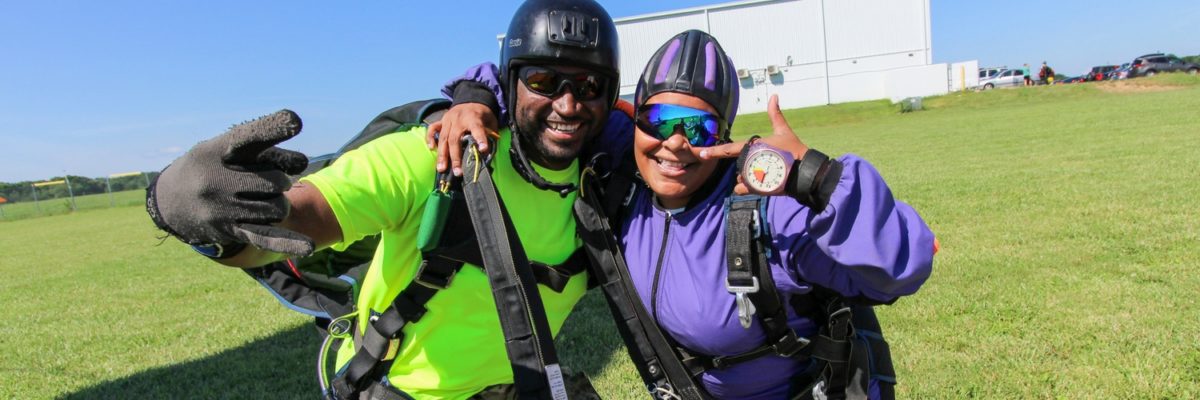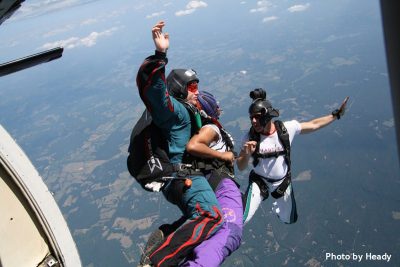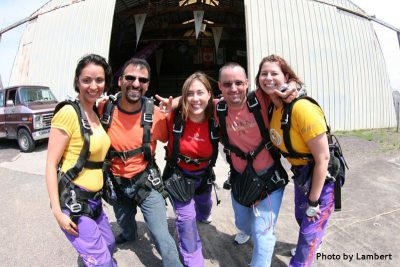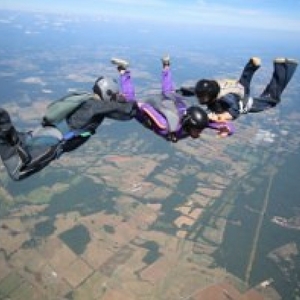
Behind the Scenes of a Skydiving Operation
Monday, August 6, 2018
- Skydive Orange
- 8/06/18
- 0
- General
When you look at an analog clock what do you see? There are the obvious things on the outside: smooth white face, fine line segments spaced incrementally, black numbers marking hours 1-12, and two hands that tic by and mark the passing of time. It seems so simple—but what you don’t see is the oscillator, the wheel chain notching and turning the indicator hands, or the cogs and gears intricately connected. A skydiving operation runs in a similar way: there is quite a bit going on behind the scenes. When it comes to a skydiving operation, are a lot of variables and a few unpredictable aspects that have to be taken into account.
Complexities Unseen
Skydiving is a unique experience, and it is not as simple to get you in the air as sitting you in a training class and then putting you right on a plane. Getting jumpers in the air requires a bit of artistry and is often a balancing act. You see, the aircraft only has so much space and each plane fits a certain number of jumpers. We refer to these ‘spaces’ as slots. The slots in the aircraft must then be divided up between different groups of jumpers. There are licensed skydivers, tandem students, the instructors, videographers, student skydivers in our AFF program, and their instructors—and everybody wants their chance to get in the air. In addition to our pre-arranged scheduled groups, we sometimes have walk-ins. Though, slots are preferentially given to those with reservations.
Groupings of tandem skydivers, students, and fun jumpers changes daily. It is impossible to predict who will come, how many will come, and when they will come. Tandem students require an instructor, and there are only a certain number of instructors available at any one time. Because we strive for an excellent experience, we want each tandem instructor to have adequate time meeting and gearing up their students. This is something we don’t want to rush!
Last minute customer additions and changes or tardy tandem students and delayed check-ins cause ripples down the line. Mother Nature is another force to be considered; it is well known she has a will of her own and can change at whim. Inclement weather or overcast skies can cause delays. As frustrating as it is, there is no way to know exactly what the weather will do. But, jump operations will be delayed if it appears that the weather is not suitable for safe skydiving operations. We just refuse to take such risks with our staff and students. Amidst all of the uncertainty of groupings, there is one sure thing. There are only a certain number of slots available on the plane.
Knowledge is Power
By knowing what to expect, you can prepare yourself for the day at the drop zone and any delays that may occur. To ease unexpected wait times, consider bringing a deck of cards, some games, or reading material. We do have vending machines in case you need a snack, and we also have shaded indoor seating, so you can beat the heat while you wait. If you are prepared to spend a few hours at the drop zone, you can be pleasantly surprised if the experience moves right along quickly or ready to keep boredom at bay and handle whatever the day brings.
We wish we could promise every jumping day would be delay-free, but unfortunately, we cannot. Every skydiving facility has to contend with tons and variables, and there is just no way to be in control of them all. Though, having been around since 1977, Skydive Orange has a pretty good handle on the system and the aspects we can control: we ensure that our guests will be provided with a safe and memorable skydiving experience with highly trained USPA instructors, state of the art skydiving equipment, and aircraft that are spacious, comfortable, and clean. So, are you ready to schedule your skydiving experience? Give us a call today!
The largest tandem skydiving center near Northern Virginia, Washington D.C. and Maryland.
Copyright © 2025, Skydive Orange, All Rights Reserved.
DropZone Web Design & Marketing by Beyond Marketing, LLC




